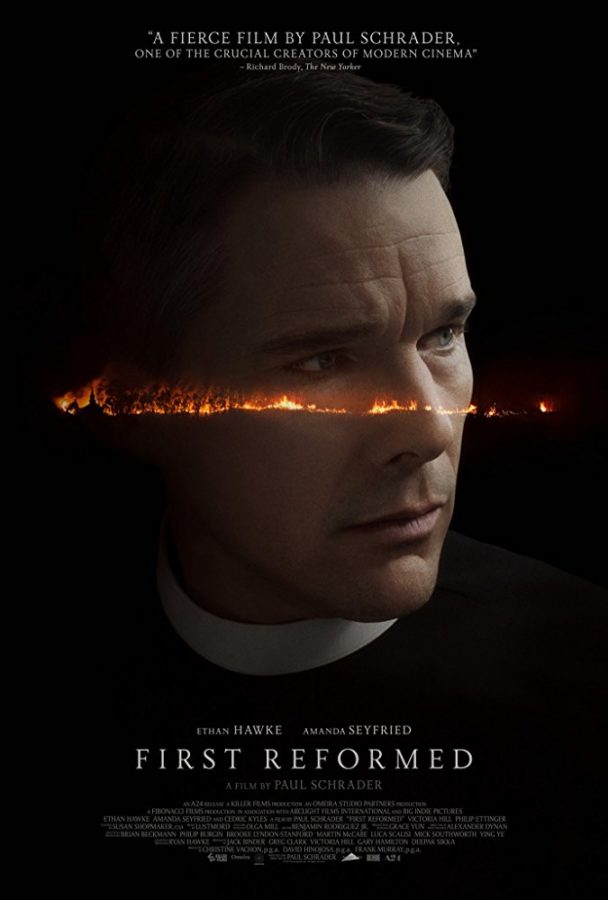An expertly and meticulously crafted film, “First Reformed” lingers in the audience’s mind with honest and powerful questions about faith, love, sacrifice and loss.
Following Reverend Toller’s (Ethan Hawke) one year experiment of writing all of this thoughts in a journal instead of praying, Toller’s faith is challenged by a troubled couple (Amanda Seyfried and Philip Ettinger), fellow Reverend Jeffers (Cedric the Entertainer) and a local business magnate over the reconsecration of Toller’s 250-year-old church First Reformed.
(Video courtesy of A24’s Youtube page.)
Right from the first scene, visually one can see why the current indie patron saint A24 partnered with the film’s writer and director Paul Schrader. From the 4:3 aspect ratio that was similarly done in “A Ghost Story” and “Mid 90s” to the bleak grays, blues
Like many A24 films, like the ones previously mentioned, “First Reformed” has its own stark visual style feeling like a combination of Wes Anderson’s highly symmetrical framing and the esoteric and subjective framing of someone like Terrence Malick.
While Anderson’s framing seems to come more from the whimsy and fairytales, Schrader creates compositions that seem rigid or puritanical in some manner that are more reminiscent of an oil painting.
In addition to the starkness and minimalist set design in the film, the editing forces the audience to hold on to certain moments for half a beat longer than a typical film would, but it’s those moments that bring in this theme of emptiness that permeates the entire film.
Schrader’s confidence in his visually and contextually interwoven story not only shows in his decision to hold on to
In several scenes sprinkled throughout the film, Schrader has shots that would seem to break basic logic, like holding on a shot of Seyfried’s character while she is turned away from the camera crying.
In those moments, along with one scene in particular that occur roughly two-thirds into the film, Schrader skillfully keeps the viewer almost
“First Reformed” is nominated for Best Original Screenplay at this Sunday’s Academy Awards.
Verdict: 8/10
While the similarities to









